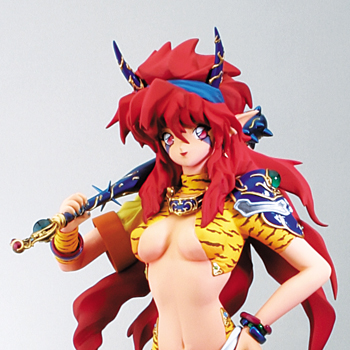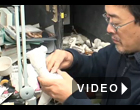"Psyche"
BOME
December 11, 2009 – December 23, 2009

1750 x 700 x 950mm
Medium : Urethane Paint , FRP, Glass, Steel
©Hiroyuki Utatane / COMIC HOUSE
©KAIYODO Co., Ltd. All Rights Reserved.
Pioneering bishojo figure artist BOME to be featured in a solo exhibition at The Kaikai Kiki Gallery
A pioneer in the field of bishojo (beautiful girl) figures, BOME has devoted himself to this unique style throughout his 20 year career, creating more than 200 individual models. From the moment he burst on the scene, he has been acclaimed for the “miraculous skill” with which he brings two-dimensional anime girls to life in the three-dimensional world, while still retaining their charming flatness. His figures became the roots of what later developed into an established form. BOME’s career resists categorization as that of a sculptor alone and his unique, significant place in the artistic landscape is acknowledged as its own epoch, one that marks the beginning of a new history.
Surprisingly, his aesthetic roots can also be felt in the Buddha statues made by Japan’s Busshi (traditional Japanese sculptors who specialized in Buddhist imagery).
The title Psyche is culled from the name of Cupid’s lover in Greek mythology. As a test of her love, she is said to have crossed the River Styx alive, and her name now carries the meaning of “soul” or “heart”. Psyche is also the origin of words like “psychology” or “psychedelic”, and the title reflects BOME’s desire to produce figures which stem from a world of pure imagination, rather than an imitation of reality.
The exhibition will also feature original “limited edition” works that sees him collaborate with two of
the manga world’s biggest names: artists Kōsuke Fujishima (the creator of Oh My Goddess!) and Ito Ōgure (the creator of Air Gear). The pair has been asked by BOME to provide him with an original “Oni Musume” (devil’s daughter) drawing. The “Oni Musume” is one of BOME’s important motifs
and is also a powerful homage to the character Lum from Rumiko Takahashi’s manga Urusei Yatsura.
This character, “Lum-chan,” is often cited as the origin of the otaku era. Born to a generation for whom the question “what is an otaku” served as an examination of their very identity, BOME’s search for the source and significance of the otaku existence is as sincere as any artist’s explorations of existentialism or doubt.
-
More
"Psyche"
BOME
06:45
